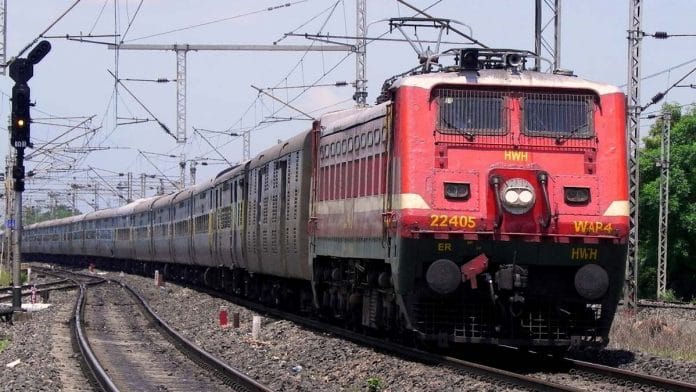New Delhi: The union cabinet Tuesday approved the merger of eight existing rail services into a single Indian Railways Management Service (IRMS), a major policy reform that aims to pave the way for a significant overhaul of the Railways.
As a result of the merger, the eight-member Railway Board, the apex body that oversees Rail Operations, will now consist of just four members: Member (Infrastructure), member (Finance), member (Rolling Stock) and member (Operations and Business Development). The Chairman Railway Board will also function as the organisation’s Chief Executive Officer (CEO).
Subject experts from outside the government service can be taken on board as Independent members, Railways Minister Piyush Goyal announced at a press conference.
The Railways will also have just two departments — Railway Protection Force and Medical Service Department — with all its other departments coming under the Railway Management System.
In his briefing after the cabinet meet, Goyal also said that a cabinet-appointed committee would work out the modalities of the restructuring exercise in consultation with the officials of the Department of Personnel and Training (DoPT).
“The restructuring will ensure the end of departmentalism and smooth operations,” Goyal said.
PTI, quoting sources, said this was done to ensure the end of turf wars among the different cadres and departments that were affecting railway operations.
Also read: After complaints from employees, Tejas Express crew get salary hike and weekly-off
Railway officials unsure
While the restructuring move is in line with the recommendations of several committees of experts such as those headed by Rakesh Mohan, Sam Pitroda or Bibek Debroy, the move seems to have come as a surprise to some railways officials.
“At a time when rail finances are precarious, the move to merge services in one stroke will create further confusion,” former chairman of the Railway Board, S.S. Khurana, said.
A senior railways ministry official said the government’s decision to consult DoPT officials to work out the restructuring was “like putting the cart before the horse”.
“Such an exercise ought to have been conducted before making the announcement,” the official said. “Cadre merger ought to have happened in an incremental manner in order to bring stability to the restructuring move.”
The official also said that departmentalism had its positives. For one, it encouraged the cultural ownership of technology in a particular department. “The merger will bring in a culture of neutrality, which is not such a good thing from the point of view of technological research and advancement,” the official said.
There may also be a dearth of experts as unlike in China, which has universities specialising in rail engineering, dedicated rail or transport engineering colleges or universities do not exist in India.
And while the restructuring plan may well be in keeping with global trends and the concept well-intentioned, there are lessons from across the world. The Argentinian Railways, for example, integrated its cadre and ushered in privatisation in the late 1970s but hasn’t had much success. Britain has privatised its railways but the government continues to heavily subsidise rail operations.
Also read: Modi govt brings Northeast rail infra on track, but land issues could hurt progress
With PTI inputs







It sounds more like knee jerk reaction to merge all railway Cadres as one, than well thought and planned decision. Majority of the activity of Railway is technical in nature, be it manufacturing of engines/coaches, design and development of new rail technologies, be it maintenence or traffic and signalling…these activities can not be supervised by officials of commercial and accounts cadres. Railway is bound to make quasi departmentalisation otherwise only confusion and job misfit will prevail…